Join the MA Sierra Club Forest Protection team as we submit public comments to the Department of Conservation and Recreation’s Division of Water Supply Protection (DCR-DWSP). For their fiscal year 2025, they have proposed cutting in 1,500 acres or more in state forests around the Quabbin, Ware, and Wachusett watersheds. In the face of linked climate and biodiversity crises, we believe public forests should be left standing for the greatest public good.
DCR-DWSP is accepting 2,000 character comments including spaces via a form that doesn’t allow hyperlinks! With these limits on the length of comments, we have drafted multiple versions of comments for you to personalize depending on the core point you want to make.
Submit your comments here! In the dropdown menu titled Topic Selection, select “Water Supply Protection FY25 Forestry Proposals - deadline 10/31/24.” Adding questions into your comments (ex. how do these plans address the linked climate and biodiversity crises?) generally increases your likelihood of getting a response once public comments are posted on their website. If you are open to it, we would love to receive a copy of what you’ve submitted via the form. Email Celeste your comments at celeste.venolia@sierraclub.org
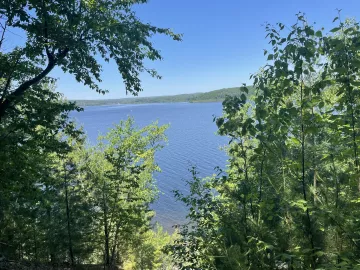
Version 1: Overall Comments [1870 characters]
I oppose all 18 current Watershed Forestry Project Proposals because they reduce the ecological services watershed forests provide while doing nothing to improve water quality. As the DWSP admitted to the Climate Forestry Committee, logging is not necessary to provide clean and abundant drinking water supplies. In fact, the proposed logging reduces carbon accumulation and increases carbon emissions at the expense of ecological integrity, biodiversity protection, and rapid recovery from natural disturbances.
One important concern is that no limits are placed on the size of the logging equipment to be employed. Forest soils are complex, biologically diverse, and critically important components of forest ecosystems, but they are fragile and easily damaged by heavy equipment. The heavier the equipment the greater the risk of serious trauma from compaction and disturbance – trauma that profoundly alters the structural and ecological integrity of soils. Heavy equipment also harms the forest by crushing or breaking the roots of any remaining trees. To allow such equipment throughout the forest amounts to forest abuse not forest care.
Another concern is the emphasis on clear cuts, euphemistically called patch cuts, up to several acres in size. All of these involve the destruction of many healthy trees actively accumulating carbon and supporting a myriad of other life forms. It is difficult to avoid the conclusion that harvest is the primary mission and care for the forest and the ecological services it provides, including high quality water, are of only secondary importance. Every proposal must generate monetary profits for loggers even if that entails large ecological losses.
Despite a blizzard of claims that logging enhances the benefits forests provide, no evidence is provided that any such benefits actually exceed the harm logging always incurs.
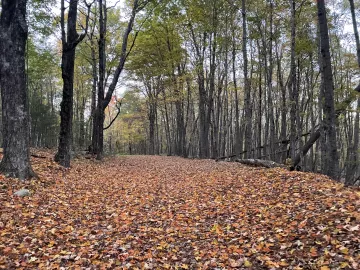
Version 2: Climate Forestry Committee Report [1819 characters]
I am opposed to the 2025 DWSP logging plans because they do not reflect the clear findings of the Climate Forestry Committee (CFC): that the forest functions best when left unmanaged and that older trees don’t just sequester more carbon, they also harbor more biodiversity. Instead, some plans call for cutting patches in areas with older growth and mature trees. These are exactly the places that should be left alone. In fact, they should be incorporated into permanent reserves, which are mentioned in the CFC report, but do not currently exist in the watershed. Other areas are part of continuing rotations of cutting that mean the forest can never mature.
Overall, these plans mention climate and biodiversity enhancement but have no details. What is the baseline ecology observed in these areas—not just trees for lumber and game for hunting, but soil health, microbial life, vernal ponds, insect habitat, for example? DWSP must specify how specific goals will be met, how results will be measured, and how work in one area will affect another. If the details missing from these summaries are in the plans themselves, where are these available to the public? There is no mention of third-party monitoring or impartial audits of past or ongoing activities. Patch cutting has been going on for at least 10 years so how has that affected forest ecology? Without consistent observation or metrics, the DWSP has no basis to support continued logging of watershed areas.
On the CFC there was a clear tension between proforestation thinking and conservation forestry adherents. These plans show only the forestry approach, allowing ongoing active management. Referring to logging events as “harvests” is a clear indication of the intent to keep forests producing a crop rather than treating them as a protected ecosystem.
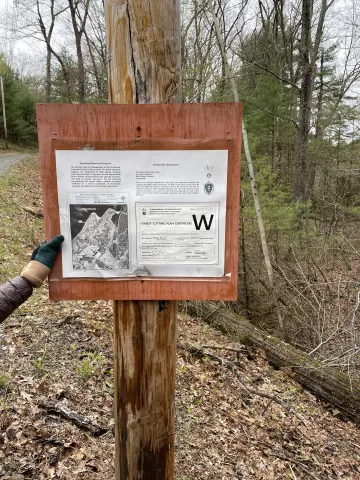
Version 3: Climate Impact [1740 characters]
I oppose all 18 FY25 DWSP cutting projects because of their negative impacts on ecosystems and climate. The ‘Climate Change Considerations’ section of each proposal is set up as if it is project specific, but instead contains boilerplate descriptions of “climate-smart forestry.” It does not address impacts to any individual projects. How can the state claim carbon benefits when there are no required metrics to calculate the true carbon cost of cutting for each project? The state should require an inventory of the forest’s current carbon value, carbon cost of cutting, resulting soil damage, and forgone carbon accumulation while the forest regenerates. Mitigation efforts to restore carbon deficits created by the project should also be required.
Many of the statements are inconsistent with current climate and forest science and are contrary to the Climate Forestry Committee’s Recommendations made by the panel’s scientists. For example, there is no evidence that logging improves a forest’s resilience from major climate events. Evidence DOES support that forests are more resilient to natural events if left intact. “Extending regeneration periods,” harvesting to increase “resilience” or to “align with natural disturbances” may reduce the climate impact of logging, but do not come close to the benefits of not logging at all.
These proposals use the language of the CFC while mostly continuing business as usual. “Climate smart forestry” may be good for producing wood products, but it is never a good climate or biodiversity solution. The state must stop pretending it is. Leave public forests intact and protect additional forests from both development AND extraction to maximize the climate mitigating potential of forests.
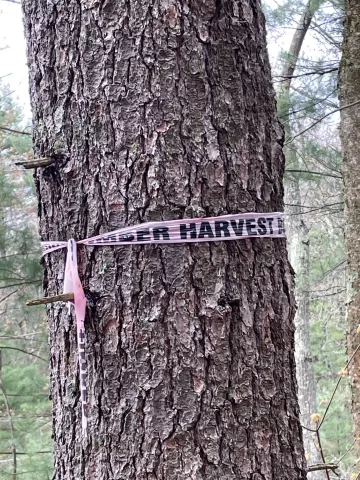
Version 4: Illegitimacy of Patch Cuts [1910 characters]
I am opposed to the 18 proposed logging projects in the Quabbin, Ware, & Wachusett watershed forests in 2025 for the reasons below.
Each project contains the same “climate-smart forest practices” that supposedly promote water quality, forest resilience, carbon sequestration, and biodiversity without supporting evidence.
The proposals concentrate on patch cutting as a primary climate-smart practice. Patch cutting for tree age and species diversity is said to increase forest resistance and resilience to natural disturbances. There are no hard data to support this. Foresters plan to repeat the patch-cut process throughout the forest. This means patch-cut logging will be perpetuated under the guise of regeneration (creation of young forests at the expense of mature and old growth trees). Mature trees, 80 years and older, are targets for these patch cuts. Only a fraction will be left. This truncates the development of complex structural characteristics and degrades forest health and biodiversity.
The proposed projects reflect minimal changes from previous practices with no substantial climate-based improvements in the DWSP’s approach to forestry. These projects reflect a continuation of patch cut logging, a practice that was started a decade ago, in one of the most actively managed forest areas in southern New England.
These projects are missing important details. For example, how much carbon will be lost and released as a result of this logging? How many board feet of timber are to be extracted? The projects identify where wetlands and vernal pools are nearby or adjacent to planned harvest sites, but do not sufficiently address how these will be protected. The same applies to protective measures to prevent soil compaction. Without this type of information, the public is getting a cosmetic view of each proposed timber harvest - this public commenting period feels like lip service.
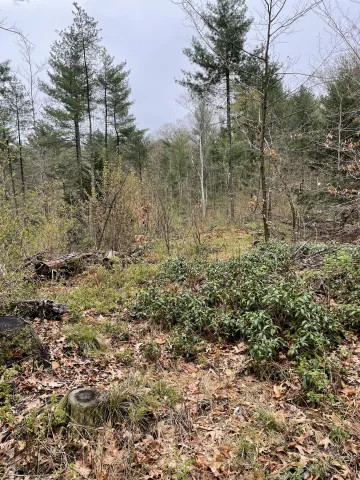
Version 5: Natural Disturbances vs Human Disturbances [Characters 1489]
I am opposed to all logging in the 2025 DWSP forest plans because logging is never climate-smart despite the many claims to the contrary. The growing consensus of scientists is that we must expand forest protection to multiply forest carbon storage capacity, as we phase out fossil fuels.The 2025 plans do not expand forest protection. They will log in 1,500 acres of trees, which is the same harvest rate as previous years. Logging decreases carbon storage in trees and in soil, where half of the forest carbon is stored. DWSP continues business as usual—management with logging, but now with a “climate-smart” label.
Every DWSP plan justifies patch cuts and thinning in order to build forest resilience. In fact, mature and old growth forests provide more resilience from natural disturbances. There is a lack of long-term scientific evidence supporting the idea that logging (human-induced disturbance) improves resilience to natural disturbances (hurricanes, drought, insect invasions, wildfire). There is a growing consensus that leaving forests wild, unmanaged, and allowed to grow old is the most effective way to maximize structural complexity, age and species diversity, as well as store more carbon (Faison 2020).
Foster and Orwig (2006) found that ecosystem services were not affected by even extreme natural disturbances, such as the 1938 hurricane, or serious insect infestations.The way to maximize the many benefits forests provide is to set them aside as forever wild.
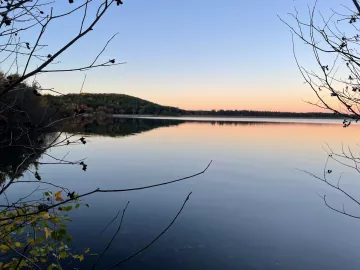
Version 6: Benefits of Reserves and Unmanaged Forests [1880 characters]
I am opposed to the DWSP logging proposals, because older intact forests preserved as wildlands provide habitat for vast numbers of woodland species, including many that have been declining over the decades.
Forest degradation due to active forest management (i.e. logging) was a primary cause of bird species decline, according to an article in Nature Ecology & Evolution (Betts et al., 2022). In the first large landscape scale study of the impact of forest management on bird populations, researchers said, “...we found substantial reductions in old forest as a result of frequent clear-cutting and a broad-scale transformation to intensified forestry.” While the 54 birds examined are from Eastern Canada, the majority of them also nest, winter, or migrate through Massachusetts. The authors conclude that “If maintaining non-declining populations of forest birds is the goal, conservation measures that halt the alteration of habitat, particularly in diverse, older forests, will be necessary.” We need to protect the diverse older forests in the Quabbin, Ware, and Wachusett watersheds.
Seventy two percent of 54 species that were studied showed significant population declines, and only 3 species showed population increases. Some of the largest population losses were for the Blackburnian warbler and the Golden-crowned Kinglet, species that need mature forests.
To make matters worse, heavy equipment, such as a 40-ton feller buncher, damages soil microorganisms, fungal networks, tree roots, and even vertebrates by crushing them as they hide beneath the soil in the winter. Historically, logging operations were conducted in the winter to take advantage of frozen ground. Now with climate change, the ground is softening and soil compaction and creation of ruts and runoff are routine.
It is time for State agencies to stop ignoring climate and biodiversity warning signs.
For reference: